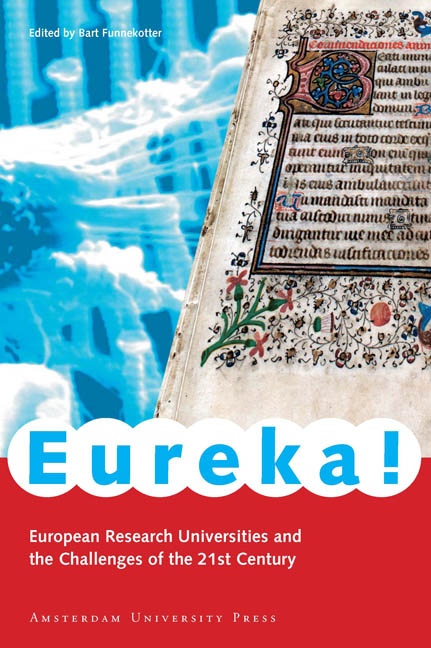Book contents
- Frontmatter
- Contents
- Foreword
- Introduction: Challenges of the Twenty-first Century
- Cambridge: Cambridge University
- Edinburgh: University of Edinburg
- Geneva: Université de Genève
- Heidelberg: Ruprecht-Karls-Universität
- Helsinki: Helsingin Yliopisto
- Leiden: Universiteit Leiden
- Louvain: Katholieke Universiteit Leuven
- Milan: Università Degli Studi Di Milano
- Munich: Ludwig-Maximilians-Universität
- Oxford: Oxford University
- Stockholm: Karolinska Institutet
- Strasbourg: Université Louis Pasteur
Edinburgh: University of Edinburg
Published online by Cambridge University Press: 23 January 2021
- Frontmatter
- Contents
- Foreword
- Introduction: Challenges of the Twenty-first Century
- Cambridge: Cambridge University
- Edinburgh: University of Edinburg
- Geneva: Université de Genève
- Heidelberg: Ruprecht-Karls-Universität
- Helsinki: Helsingin Yliopisto
- Leiden: Universiteit Leiden
- Louvain: Katholieke Universiteit Leuven
- Milan: Università Degli Studi Di Milano
- Munich: Ludwig-Maximilians-Universität
- Oxford: Oxford University
- Stockholm: Karolinska Institutet
- Strasbourg: Université Louis Pasteur
Summary
University of Edinburgh in facts and figures:
Founded in 1583
23,111 students
7,118 staff
Budget € 540 million
‘Now and again some orator would be hoisted up on the shoulders of his fellows, when an oscillation of the crowd would remove his supporters and down he would come, only to be succeeded by another at some other part of the assembly. Those who were lucky enough to be in the balconies above hurled down missiles on the crowd beneath – peas, eggs, potatoes, and bags of flour or of sulphur; while those below, wherever they found room to swing an arm, returned the fusillade with interest.’
Sir Arthur Conan Doyle, who studied medicine at Edinburgh University, was clearly familiar with the tumult that accompanied the election of new rectors there. The above passage is taken from his 1890 novel The Firm of Girdlestone. At the time it was being written, the University of Edinburgh, by then more than three hundred years old, was striving to become a modern institution for research and education.
At the time that the creator of Sherlock Holmes was writing his book, Principal Sir Alexander Grant was doing his best to give the university allure. Besides raising money for the medical faculty and supervising the organization of a student movement, he also cultivated academic traditions along the lines of those at Oxford and Cambridge. The ornate new ceremonial hall was adorned with an organ and murals and became the backdrop for yearly commencement speeches; ‘traditional’ elections were set up to choose rectors.
Still, it was only two hundred years ago that the academy in Edinburgh exchanged its old name, Tounis College (city college), for the moniker ‘university’. Since its foundation in 1583 the school had largely been renowned as a school where boys from the wealthier families could be educated for law or the clergy. Students in search of a more comprehensive education found their way to the Dutch universities of Utrecht and Leiden. In fact, the Edinburgh University archive's collection includes a letter from one of these early international students in which he describes his amazement about the skaters on the Rapenburg canal in Leiden.
- Type
- Chapter
- Information
- Eureka!European Research Universities and the Challenges of the 21st Century, pp. 26 - 38Publisher: Amsterdam University PressPrint publication year: 2005



